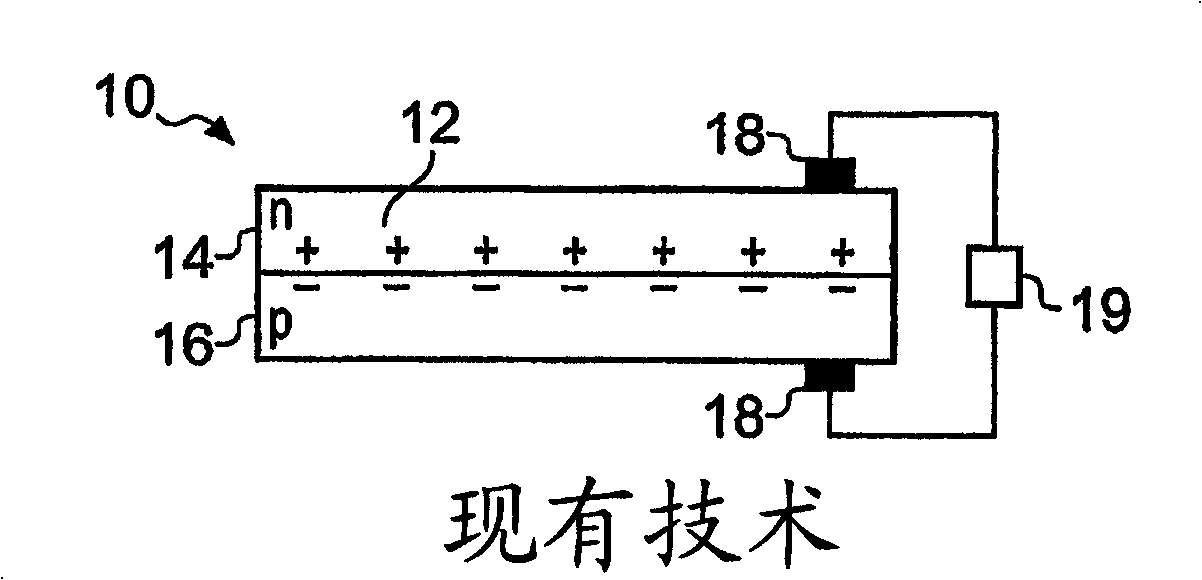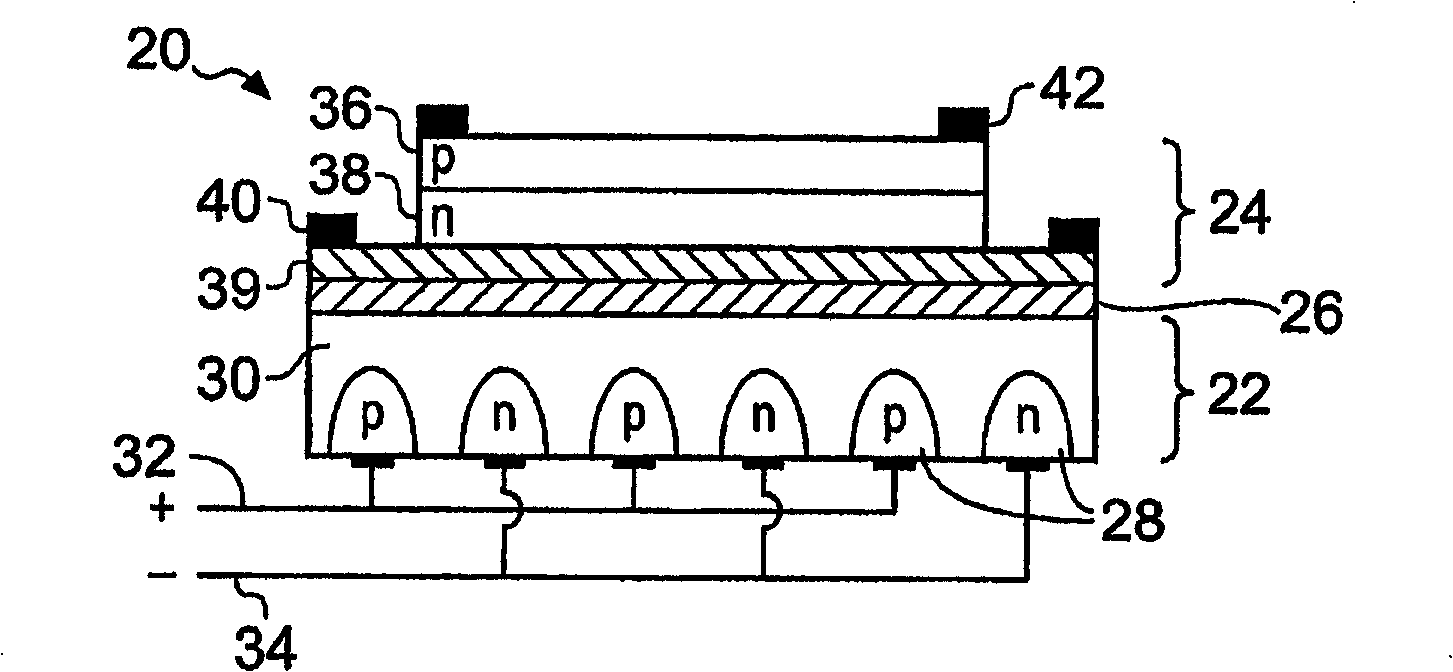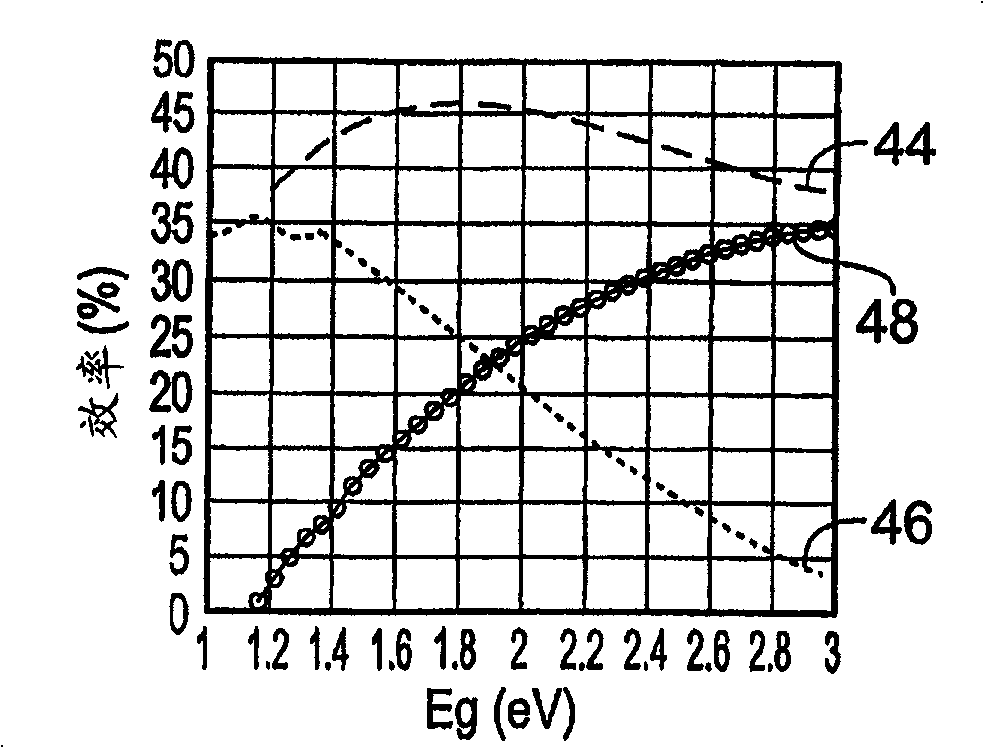Photovoltaic cells comprising two photovoltaic cells and two photon sources
A photon source and photovoltaic cell technology, applied in the field of photovoltaic cells, can solve the problems of reduced efficiency, reduced device efficiency, and the inability of a single cell to be matched by current, so as to achieve the effect of high-efficiency power generation
- Summary
- Abstract
- Description
- Claims
- Application Information
AI Technical Summary
Problems solved by technology
Method used
Image
Examples
Embodiment Construction
[0029] Figure 1 shows a schematic representation of a simple photovoltaic cell, such as a solar cell, according to the prior art. Cell 10 comprises a part 12 of semiconductor material, such as silicon, comprising a p-n junction, i.e., part 12 of semiconductor material comprises a first portion 14 (which is an n-type semiconductor) adjacent to a second portion 16 (which is a p-type semiconductor )set up. This arrangement creates an electric field across the p-n junction, generated by an ionized donor on one side and an ionized acceptor on the other. Electrical contacts 18 are provided on both sides of the battery 10 and thus of the p-n junction.
[0030] When a photon of electromagnetic radiation of suitable energy (e.g., in a suitable wavelength range) is incident on the cell 10 and is absorbed by the semiconductor, its energy transfers electrons from the semiconductor's valence band to the conduction band ( conduction band), thus generating electron-hole pairs. The electri...
PUM
 Login to View More
Login to View More Abstract
Description
Claims
Application Information
 Login to View More
Login to View More - R&D
- Intellectual Property
- Life Sciences
- Materials
- Tech Scout
- Unparalleled Data Quality
- Higher Quality Content
- 60% Fewer Hallucinations
Browse by: Latest US Patents, China's latest patents, Technical Efficacy Thesaurus, Application Domain, Technology Topic, Popular Technical Reports.
© 2025 PatSnap. All rights reserved.Legal|Privacy policy|Modern Slavery Act Transparency Statement|Sitemap|About US| Contact US: help@patsnap.com



